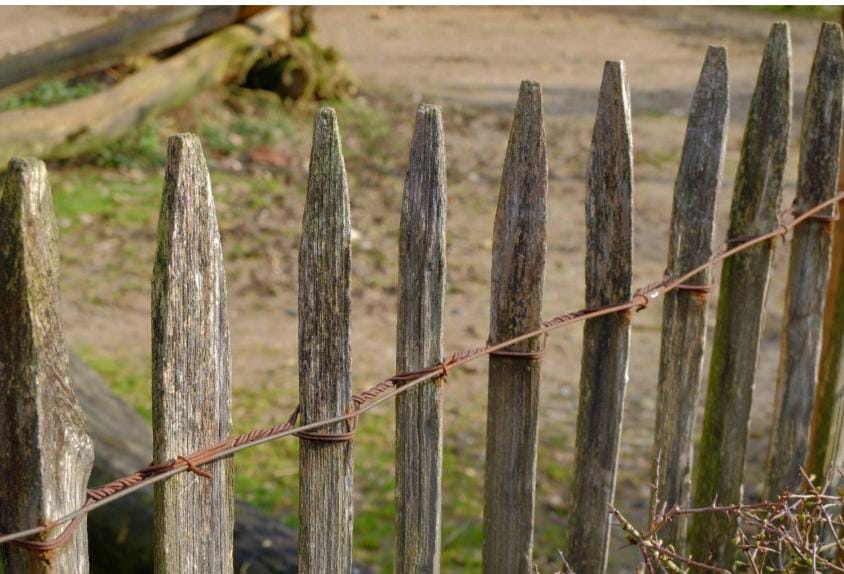Fence Repair vs. Fence Replacement: Making the Right Choice for Your Property

A sturdy, well-maintained fence is not only a key feature in enhancing your property’s curb appeal but also plays a crucial role in providing security and privacy. Setting posts in concrete is essential for stability and longevity, ensuring the structure remains secure and upright over time. However, as with all outdoor structures, fences are subject to wear and tear from exposure to harsh weather conditions, age, and physical damage. When faced with a deteriorating fence, homeowners often have to make a decision: should they repair the fence or replace it entirely? This article will explore the key factors to consider when choosing between fence repair and fence replacement to help you make the best decision for your property.
Assessing the Condition of Your Wood Fence
Before determining whether your fence requires repair or replacement, it’s important to conduct a thorough assessment of its overall condition. Here are a few common issues to look out for:
- Rotting or Damaged Wood: Wood fences are particularly susceptible to rot and decay, especially when exposed to excessive moisture. Check for signs of rotting posts or panels, as well as areas that have split or warped. Minor rot on individual boards can often be repaired, but extensive rot that affects the structural integrity of the fence might indicate the need for replacement. Replacing a rotted post is crucial to maintain the fence’s structural integrity.
- Rust on Metal Fences: For metal fences, rust is a significant issue. Rust can weaken the material, making the fence more prone to bending or breaking. If rust is localized to small areas, you may be able to clean and treat the affected spots. However, widespread rust often means that a replacement is a more cost-effective and durable solution.
- Leaning or Wobbly Posts: Leaning or loose posts are common with fences that have been installed incorrectly or subjected to shifting soil and weather conditions. In many cases, leaning posts can be stabilized with a proper fence repair, but if multiple posts are affected, replacement may be more practical.
- Missing or Broken Boards or Panels: A few missing or damaged boards on a wood fence can be replaced easily. Similarly, for vinyl or chain-link fences, damaged sections can often be replaced without requiring a complete overhaul. However, if multiple sections are missing or broken, replacing the entire fence might be a better investment. Consider the aesthetic appeal of dog ear style fences as an option for replacement.
Assessing Repair Options
When deciding whether to repair or replace your fence, it’s essential to assess the extent of the damage and the overall condition of the fence. If the damage is minor, a repair might be the most cost-effective option. However, if the damage is extensive or the fence is old and worn out, replacement might be the better choice.
Consider the following factors when assessing your repair options:
- The Type of Material Used: Different materials require different approaches. For instance, wood fences can often be repaired by replacing individual boards or posts, while aluminum fences might need specialized techniques to address issues like dents or bends.
- Extent of the Damage: If the damage is limited to a single post or a small section, a targeted repair can be sufficient. However, if the entire fence shows signs of wear and tear, such as widespread rot in a wood fence or extensive rust in a metal fence, replacement might be necessary.
- Age and Condition of the Fence: An old fence that has seen better days might not be worth the effort and cost of repairs. If your fence is nearing the end of its lifespan, investing in a new fence could be more cost-effective in the long run.
By carefully evaluating these factors, you can make an informed decision about whether to proceed with a repair or opt for a complete fence replacement.
When to Opt for Fence Repair
Fence repair is often the most cost-effective and efficient solution for minor to moderate damage, especially if the majority of the structure is still in good condition. Here are some situations where repairing your fence makes the most sense:
- Localized Damage: If only a small portion of your fence is damaged, such as a few broken boards, cracked panels, or a leaning post, targeted repairs can restore the fence’s function and appearance without the need for a full replacement.
- Budget-Friendly Fixes: For homeowners on a tight budget, fence repair is an affordable way to extend the life of the fence. Repairs like reattaching loose boards, replacing rotted sections, and stabilizing posts can be done quickly and at a fraction of the cost of installing a new fence.
- Preserving Aesthetics: If your fence is an integral part of your property’s design and replacing it would disrupt the overall aesthetic, repairing specific sections can help maintain the visual appeal. This is especially true for older, vintage fences that add character to your home. Additionally, repairing a garden fence can enhance the visual appeal of the garden and create a picturesque setting with colorful plants and decorative elements.
- Routine Maintenance: Regular maintenance, such as applying sealants to protect wood fences from moisture or using rust inhibitors on metal fences, can help prevent small issues from becoming major problems. If your fence is still structurally sound but has minor aesthetic issues, maintenance and minor repairs will suffice.
When Fence Replacement is the Best Option
While fence repair is a great option for extending the life of your fence, there are certain situations where fence replacement is the better choice. Here are a few scenarios where replacing your fence is more beneficial:
- Extensive Structural Damage: If a large portion of your fence is leaning, posts are rotting, or the entire structure is compromised, repairing it may not be enough. In this case, a complete fence replacement will provide you with a more stable and durable solution.
- High Maintenance Costs: If you find yourself constantly repairing different parts of the fence, those costs can add up quickly. In such cases, it might be more cost-effective in the long run to replace the fence rather than continuing to invest in patchwork repairs. Local experts in areas like El Dorado Hills and Sacramento County can provide quality fence replacement services.
- Outdated or Inefficient Design: Fences that are outdated or no longer meet your needs in terms of privacy, security, or aesthetics may need to be replaced. For example, if your current fence is too short to provide the privacy you desire or does not complement the style of your home, installing a new fence with an updated design could be a better investment.
- Severe Weather Damage: Fences that have been severely damaged by storms, high winds, or falling trees often require a complete replacement. While some sections may still be intact, the cost and effort of repairing widespread damage might outweigh the benefits of installing a brand-new fence.
- Material Upgrades: Sometimes, homeowners choose fence replacement to upgrade to a more durable or visually appealing material. For instance, if you have an old wood fence that requires constant maintenance, you may want to replace it with a low-maintenance vinyl or aluminum fence that can better withstand the elements. Consider your next project and explore instructional videos and expert advice for your home improvement endeavors.
Choosing the Right Replacement Material
When replacing your fence, it’s crucial to choose the right material to ensure durability, longevity, and aesthetic appeal. Here are some popular fence materials to consider:
- Wood: A classic choice, wood fences offer a natural look and can be customized with different stains or paints. Options like cedar, pine, and redwood each have their unique benefits, from resistance to insects to natural rot resistance.
- Aluminum: Known for its low maintenance, aluminum fences are resistant to rust and corrosion, making them a durable option. They come in various styles, such as flat tops and spear tops, allowing you to choose a design that complements your property.
- Vinyl: This material is both durable and low-maintenance, resistant to rot, rust, and insect damage. Vinyl fences are available in a range of styles and colors, making it easy to find an option that matches your home’s exterior.
Consider the following factors when choosing a replacement material:
- Durability: Select a material that can withstand the elements and last for many years, reducing the need for frequent repairs or replacements.
- Maintenance: Opt for a low-maintenance material like aluminum or vinyl to minimize upkeep costs and effort.
- Aesthetic Appeal: Choose a material that enhances your home’s curb appeal and complements its exterior design.
By weighing these factors, you can select a fencing material that meets your needs and enhances your property’s value.
Budgeting for Your Fence Project
Budgeting for your fence project is essential to ensure you stay within your means and get the best value for your money. Here are some factors to consider when budgeting for your fence project:
- Material Costs: Calculate the cost of the materials needed for your fence project, including posts, panels, and hardware. Different materials come with varying price points, so choose one that fits your budget while meeting your needs.
- Labor Costs: If you’re hiring a contractor, factor in labor costs, including installation and repair fees. Labor costs can vary based on the complexity of the job and the contractor’s experience.
- Permits and Inspections: Check with your local government to determine if any permits or inspections are required for your fence project. These can add to the overall cost but are necessary to ensure compliance with local regulations.
- Maintenance Costs: Consider ongoing maintenance costs, including repairs and replacements, when budgeting for your fence project. Materials like wood may require more frequent upkeep compared to low-maintenance options like vinyl or aluminum.
To get the best value for your money, consider the following tips:
- Get Multiple Quotes: Obtain quotes from several contractors to compare prices and services. This can help you find the best deal and ensure you’re getting quality work.
- Choose Durable Materials: Opt for materials that are durable and low-maintenance to reduce long-term upkeep costs.
- Consider DIY Options: If you have the skills and tools, consider doing some or all of the installation or repair work yourself to save on labor costs.
By carefully planning and budgeting for your fence project, you can achieve a successful and cost-effective outcome that enhances your property’s value and appearance.
Choosing the Right Contractor
Whether you’re opting for fence repair or fence replacement, selecting a skilled and reputable contractor is essential for ensuring high-quality results. Look for contractors with experience in the type of fence you have, and don’t hesitate to ask for references or view examples of their past work. Choosing a contractor with local expertise in areas like Sacramento County can ensure they understand the specific needs and expectations of clients in that region.
Additionally, always get multiple quotes to compare pricing and services. A professional contractor can help you assess the condition of your fence and recommend the best course of action based on your specific needs and budget.
Conclusion
Deciding between fence repair and fence replacement depends on several factors, including the extent of the damage, the age of the fence, your budget, and your long-term goals. Minor issues like broken boards or leaning posts can often be addressed with simple repairs, while extensive damage, outdated designs, or high maintenance costs might warrant a complete replacement. By thoroughly assessing your fence and consulting with a professional, you can make an informed decision that protects your property and enhances its value for years to come.





